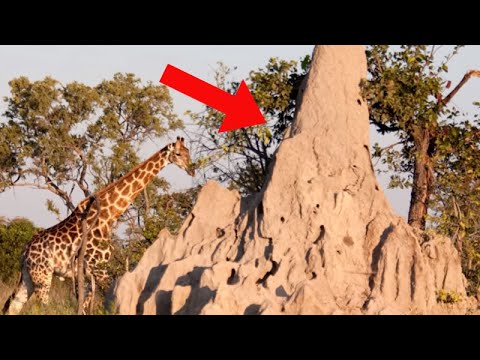
Subscribe to Epic Wildlife http://goo.gl/6rzs5u
Let’s Connect
— http://www.epicadamwildlife.com/
— http://www.facebook.com/epicadamwildlife
— http://www.twitter.com/epicwildlife
— http://gplus.to/epicwildlife
Largest Objects Constructed by Animals
From complex termite mounds and elaborate tunnels … to structures you can spot from space … here are 15 of the largest objects constructed by animals
#15 Naked Mole Rats
These East African rodents might be best known for their frightening appearance. In particular their long, sharp front teeth can make people squirm. But these cancer-resistant animals use those choppers for digging out elaborate tunnels underground. Their teeth, along with a tolerance for low oxygen levels allow them to engineer deep subterranean systems that can extend to total lengths exceeding 3 miles (5 km). Native to areas of East Africa, their tunnels are often located some 8 feet (2.4 m) below the surface.
#14 Montezuma Oropendola (oh-ro-pen-DOE-lah)
Native to the Caribbean lowlands from Mexico to central Panama, these birds are known for the unforgettable songs belted out by the males. They’re also known for constructing unique, hanging nests out of grass and vines. The colonies can hang more than 6 feet (1.8 m) high in the trees. Typically, 30 nests are found in the colony. But more than 170 nests have been documented.
#13 European Red Wood ants
As you might have guessed this insect is native to Europe. But they also occur in North America as well. Regardless of where they are located, the Red Wood Ants are noted for building huge, dome-shaped nests. Usually constructed in woodland clearings to better receive sunlight, and made up of twigs, grass and/or confer needles, the colonies can contain up to 400,000 workers and 100 queens. Several mounds in the area can be interconnected with the main one. New nests are established from existing nests, and can rise up to 7 feet (2.1 m). Once a colony is established, it’s there to stay. These ants are aggressively territorial and fight savage battles with other colonies to establish (or re-establish) territorial boundaries.
#12 Gopher Towns
These rodents may have gotten a bad rep thanks to the movie “Caddyshack”. While that critter wreaked a lot of havoc on the golf course, gophers are actually very adept at creating. In particular, they’re known to create subterranean networks of tunnels that can sprawl for several acres (or hectares) and contains thousands of them. The tunnels are exactingly organized, complete with sleeping rooms and nurseries. By transporting food in their pouch like cheeks, they can hoard supplies from above. Temperature is regulated by air chambers. And even though they live underground, the gophers build a series of levees around the tunnel entrances. If all that isn’t impressive enough, the resourceful rodents have even developed their own security systems. Sentry gophers will stay atop mounds that serve as little watchtowers and keep their eyes peeled for enemies. Should a threat be detected, the guards send a high-pitched whistle to the burrow that alerts all within.
#11 Sociable Weaver Bird Nests
These are not the largest birds, but they do build some of the largest and most spectacular nests of any species. From some angles the structure can appear like a haystack that somehow landed in a tree. It can hold over 200 individuals at a given time, and the nest is built to last. These avian architects are experts at creating domiciles that are extremely energy efficient, too. Heat is retained within inner rooms for use at night. Outer rooms are used during the day, and are cooler. The birds even have a type of security system. Entrances are booby-trapped with sharp sticks to deter reptile predators. Other bird species like the pygmy falcon are welcome, though. Which kind of proves the Weavers really are Sociable birds!
#10 Paleoburrows
That term refers to underground shelters or tunnels that were excavated by large extinct animals, or megafauna (mega-fawn-nuh). They were initially discovered in Argentina in 1920, and thousands have been discovered throughout South America. The largest of them measure more than 6.5 feet wide (2 m) and stretch nearly 200 feet long (60 m). Dating back some 10,000 years, experts think the paleo burrows were probably created by animals like giant ground sloths. Those beasts could measure about 13 feet (4 m) and weigh around 2,200 pounds (1,000 kg). After they died out, the tunnels were used by indigenous human populations for shelter and ritual purposes.
#9 Bald Eagles Nests
These birds are recognized for building the largest tree nests so far documented for any animal species. At up to 13 feet deep (4 m), the nests can weigh more than 2,000 pounds (1 metric ton).
source







❤
A couple fish nests such as pufferfish circles and fall fish mounds should be considered if you make a sequal.
Wow animals are some amazing architects
Insects !!
Some of these are amazingly disgusting
You forgot human made buildings. Humans Are apart of nature as well right.
ALL RIGHT YES
talks about bees
shows wasps and hornets
A beaver dam that can be seen from space! DAMN!
Love Animals
?:
2nd
first thanks for posting